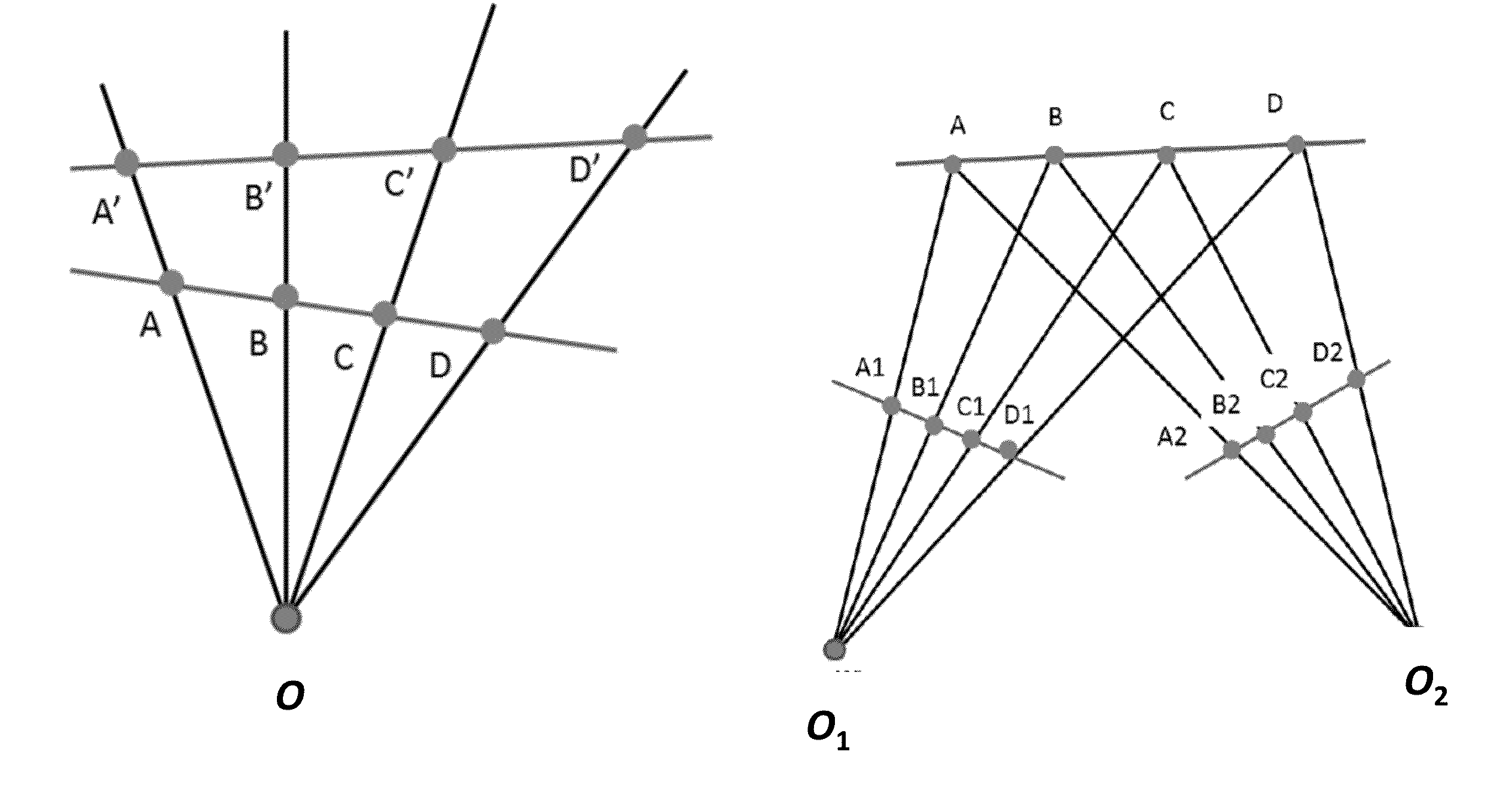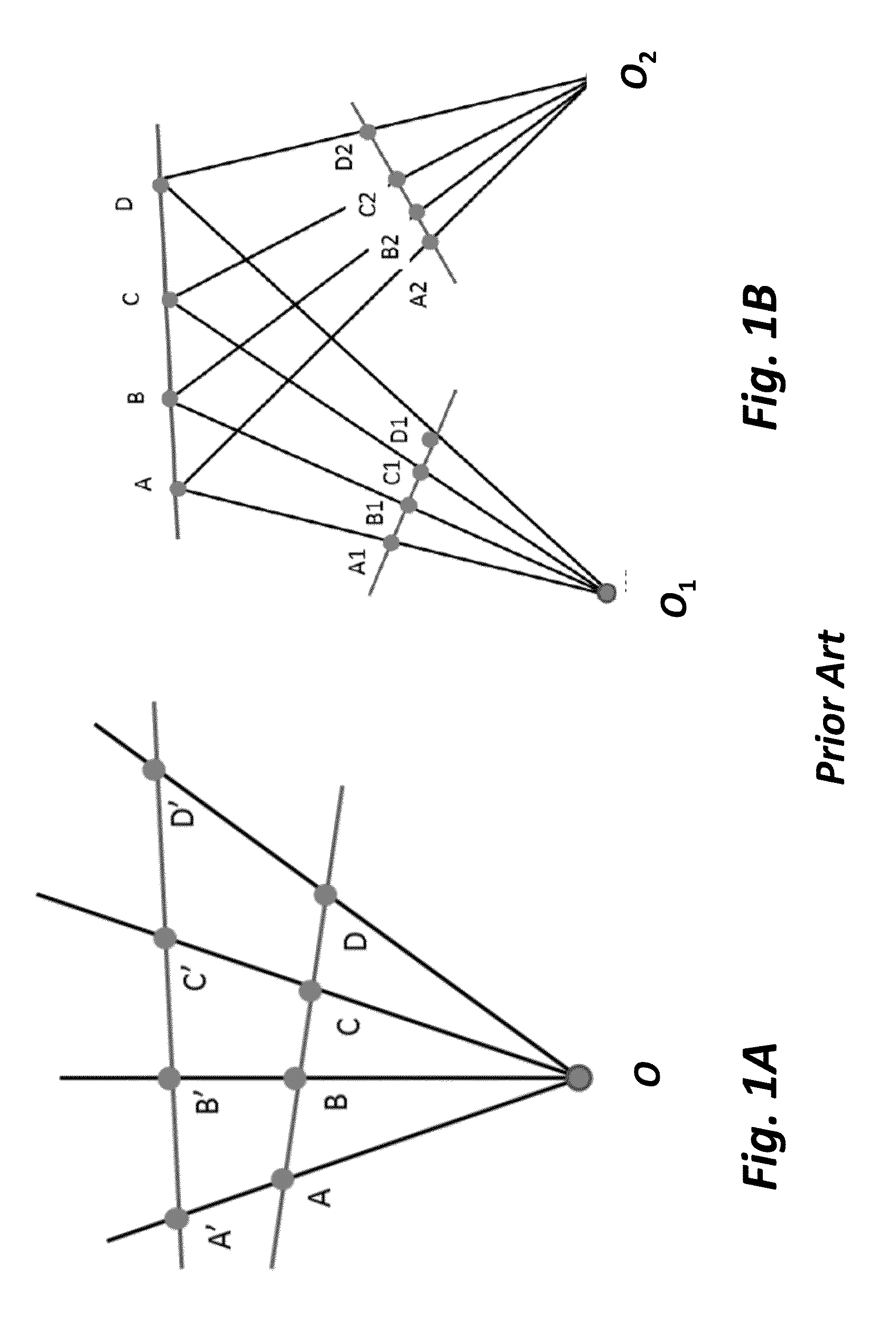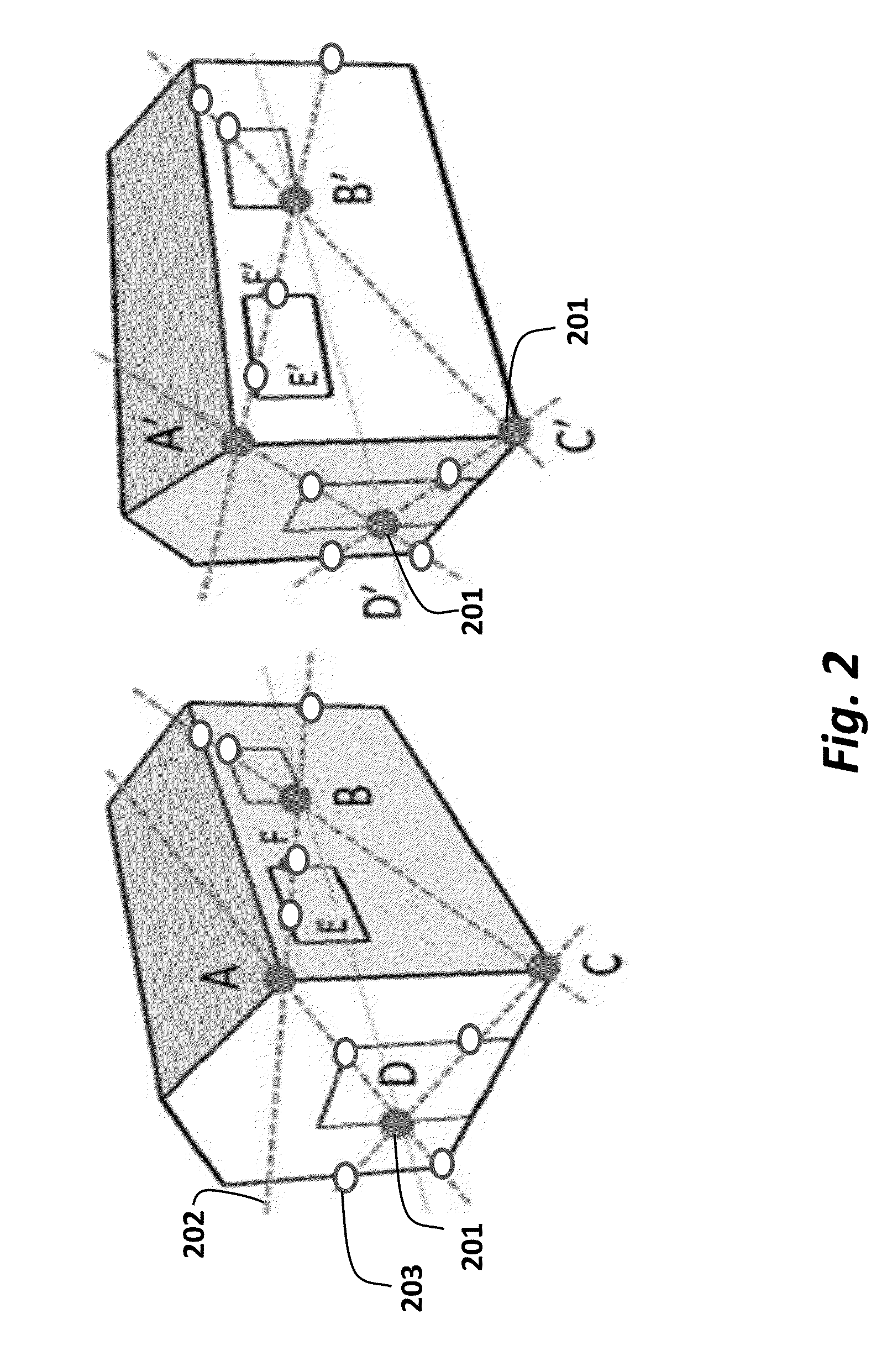Method for 3D Scene Reconstruction with Cross-Constrained Line Matching
- Summary
- Abstract
- Description
- Claims
- Application Information
AI Technical Summary
Benefits of technology
Problems solved by technology
Method used
Image
Examples
Embodiment Construction
[0023]The embodiments of the invention provide a cross-ratio constraint for wide-baseline line-matching and three-dimensional (3D) scene reconstruction from a pair of images acquired of scene.
[0024]The method uses pairs of point matches to produce line correspondences. Three embodiments are described. The invention is based on a cross-ratio constraint, as described below. Herein, the term “points” is used to refer to specific pixels in the images.
[0025]Cross-Ratio Constraint
[0026]In projective geometry, a cross-ratio is a fundamental invariant. The cross-ratio, also called a double ratio and an anharmonic ratio, is a number associated with a list of four collinear points, particularly points on a projective line.
[0027]FIG. 1A shows a pencil of lines starting at a viewpoint O and intersecting a line l1 at four points (A, B, C, D). The pencil of lines is the set of lines that pass through a given point in a projective plane. The same pencil of lines also intersect another line l2 at f...
PUM
 Login to View More
Login to View More Abstract
Description
Claims
Application Information
 Login to View More
Login to View More - R&D
- Intellectual Property
- Life Sciences
- Materials
- Tech Scout
- Unparalleled Data Quality
- Higher Quality Content
- 60% Fewer Hallucinations
Browse by: Latest US Patents, China's latest patents, Technical Efficacy Thesaurus, Application Domain, Technology Topic, Popular Technical Reports.
© 2025 PatSnap. All rights reserved.Legal|Privacy policy|Modern Slavery Act Transparency Statement|Sitemap|About US| Contact US: help@patsnap.com



